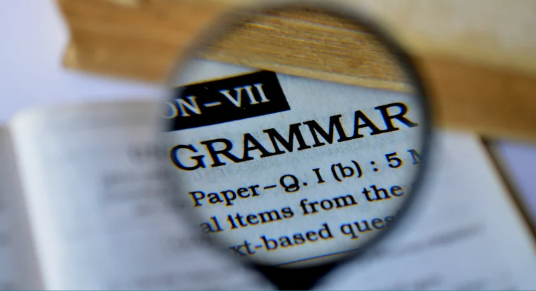
If you’re jumping into the publishing world—welcome! We’re happy you’re here. We love new people, voices, and stories. As you’ve looked into writing groups, editing stages, publishers, and more, you’ve likely come across the many terms associated with the publishing industry. As with any trade, there is a plethora of jargon.
But there’s no need to be overwhelmed or confused as you step into your writing journey. We’ve got you covered. This publishing tip will introduce you to some of the main terms used in writing, editing, design, and publishing.
Acquisition. When a publisher “acquires” a manuscript and sends a contract to the writer for publication.
Advance Reader Copy (ARC). A copy of a book that is given to a select amount of readers before it is officially published. This allows readers to read the book before publication so that they can positively review the book as soon as it is published.
Alpha Reader. A reader who looks over the first, unpolished draft of a manuscript to give feedback.
Backlist. Books that are not newly published but are still in print.
Back Matter. The material in the back of a book, including afterwords, addendums, appendices, author biographies, epilogues, glossaries, and indices.
Beta Reader. A reader who gives feedback on a manuscript after it has gone through several drafts. Beta readers can be volunteer or paid and should be regular readers of the book’s genre.
Bibliography. Section in the back of a book that cites all sources that were consulted in the book’s research. Bibliographies are commonly found in genres such as nonfiction, reference books, and historical fiction.
Blurb. A brief description of a book that entices readers to read it. The blurb is commonly found on the back of a cover, inside a book jacket, and as the book description in an online store. Also known as cover blurb.
Character Arc. How a character develops from their original state at the beginning of the book to their new state at the end of the book based on the events that transpire throughout the storyline.
Chicago Manual of Style (CMOS). A style guide used in publishing that sets grammar, punctuation, and similar guidelines for publication. It is most commonly used in print publications, fiction books, and nonfiction books.
Climax. The part of a story that has the highest tension, emotion, and action and is a major turning point for the main character.
Comps. Published works that are similar to a writer’s own work. Comps are usually referred to when a writer is pitching their work or writing a proposal to an agent or publisher.
Copyediting. A type of editing that corrects errors in capitalization, grammar, punctuation, spelling, and usage. This stage of editing generally comes right before the book is put into printer-ready format.
Copyright. The right to publish, sell, and revise a work, be it written or artistic. This right generally belongs to the creator of the work automatically unless otherwise stated by the creator or sold by contract.
Cover Blurb. A brief description found on the cover of a book that entices readers to read the book. Also known as blurb.
Developmental Editing. A type of editing that evaluates overarching story elements, such as themes, organization, character arcs, and pacing for the manuscript as a whole. This stage of editing would be done before any other stage. Also known as substantive editing.
Editorial Letter. A letter that most often accompanies a developmental edit and can accompany other levels of editing. This letter is written by the editor and includes actionable steps and advice for revision of a draft.
Elevator Pitch. A short promotional description of a book that aims to sell the book as fast as possible. An elevator pitch is typically no more than 100 words and delivered vocally to agents, publishers, or potential readers.
Endnote. A source reference or author note that is listed at the end of a book or the end of a chapter. It is marked by a superscript in the main body of text.
Epilogue. A section at the end of a book that is found directly after the main chapter content. It can act as a conclusion for the book or give commentary on what happened in the story.
Flash Fiction. A short fictional publication generally no more than 1,500 words. It may be a few paragraphs or even a few words long.
Footnote. A source reference or author comment that is listed at the bottom of a printed page and marked by a superscript in the main body of text.
Foreword. Section at the beginning of a book that briefly describes how the book came into being and why readers should read the book. Forewords are typically written by someone other than the book’s author.
Front Matter. The material at the front of the book, including title pages, forwards, prefaces, copyrights, dedications, lists of publications by the same author, and tables of contents.
Galley. A typeset document that authors, editors, and publishers review before the final publication. Also known as a proof.
Hook. A sentence or paragraph that catches the reader’s attention and entices them to keep reading. Hooks can be found at the beginning of a book or chapter and even on cover material.
Hybrid Publishing. A new publishing model that combines aspects of traditional publishing and self-publishing. There are many variations of hybrid publishers that allow for more author involvement, but it is important for authors to research any hybrid publisher in order to avoid illegitimate publishing deals.
Imprint. The trade name a larger publisher uses to distinguish and publish a specific type and collection of books.
International Standard Book Number (ISBN). A number used to identify a specific book. This number is needed in order to sell a book.
Lead Time. The time between when an editor receives a book and when it is officially published.
Line Editing. A type of editing that amends discrepancies in tone, style, plot, and characterization at the paragraph and sentence levels. This stage of editing happens after a developmental edit and before a copyedit.
The Modern Language Association Style Manual and Guide to Scholarly Publishing (MLA). A style guide used in publishing that sets grammar, punctuation, and similar guidelines for publication. It is most commonly used in the humanities, liberal arts, and literary criticism.
Narrative Nonfiction. A genre of books in which actual events and facts are structured and presented in a storytelling style.
Pacing. How quickly or slowly key events in a story develop.
Pitch. A very brief written or verbal presentation of a book that authors use to entice agents, editors, or publishers to accept their book for representation or publication. This pitch may also be found in a query letter.
Printer. Not to be confused with a publisher, a printer is a company that prints the physical copy of a book.
Print on Demand (POD). A printing process that prints single physical copies of a book only after they are ordered by a customer, instead of printing a large amount of books at once to sell at a later time.
Prologue. A section at the beginning of a book that is sometimes found directly before the main storyline. It acts as an opening for the book or gives relevant information needed to understand what will happen in the story.
Proofreading. A type of editing that catches the final errors in the typeset format of a book, including making corrections in punctuation and formatting.
Proposal. A document sent to an agent, an editor, or a publisher to convince them to accept a manuscript for representation or publication. It may include a cover letter, an author’s bio and credentials, a query letter, comparable titles, sample chapters, an outline of the book, and marketing strategies.
The Publication Manual of the American Psychological Association (APA). A style guide used in publishing that sets grammar, punctuation, and similar guidelines for publication. It is most commonly used in behavioral sciences, healthcare, and social science.
Publisher. A company that acquires, edits, designs, and markets a book. They also oversee public relations and sales.
Query Letter. A brief letter, typically one page or approximately 250 words, that is sent to an agent, editor, or publisher to convince them to accept your manuscript for representation or publication. A query letter includes a manuscript’s title, word count, and genre, as well as a hook, quick author bio, and synopsis of the story.
Revisions. The changes an author makes to a work.
Slush Pile. Unsolicited manuscripts received by an agent, editor, or publisher. These manuscripts may not be top priority and may not be read in a timely manner.
Story Arc. The chronological structure of a plot, including a beginning, a middle, and an ending.
Synopsis. A brief summary of a manuscript.
Title Page. A page near the front of the book that includes the title, subtitle, edition, author name, publisher, and, when necessary, the imprint.
Trope. A common theme or element found in a specific genre.
Typesetting. Formatting a manuscript from a Word document, Google Doc, or similar format to an industry-standard e-book or PDF.
Unique Selling Proposition (USP). What makes a book stand out in the marketplace.
Work in Progress (WIP). A manuscript that a writer is currently working on.
You’re sure to find many more terms and acronyms in the publishing world, but this list should give you a good starting point to understanding the rich jargon used by agents, editors, designers, publishers, readers, writers, and more.
We would like to thank Breanna Call and our friends at Ever Editing for allowing us to share segments of this article with you. To read the article in full, click here.




Leave a Reply